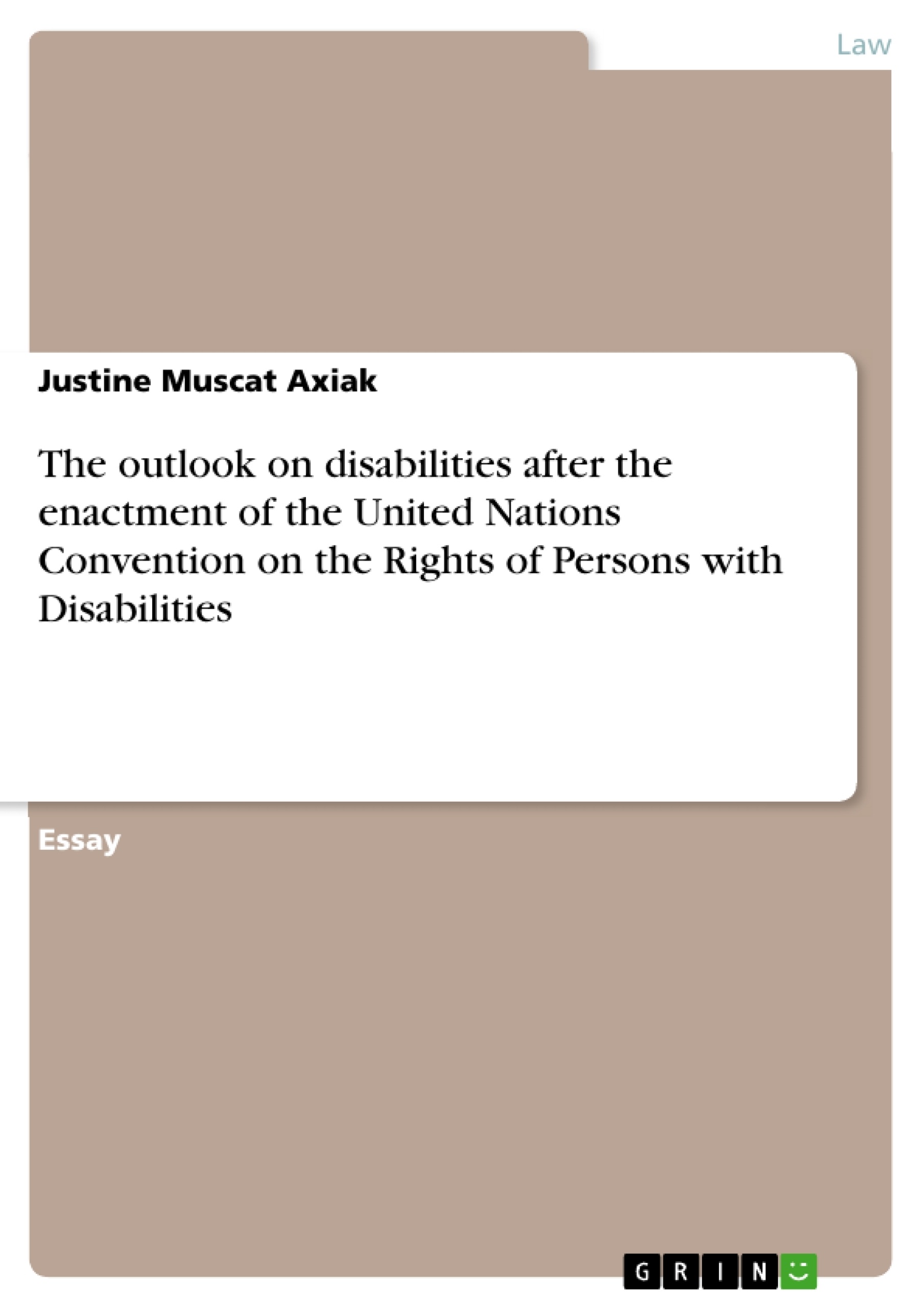The outlook on disability issues and on persons with disabilities has changed throughout the centuries. From being possessed by spirits, to being born as a result of sin, persons with disabilities have suffered and have been stripped from their basic fundamental human rights. This all chnged once the United Nations enacted the Convention on the Rights of Persons with Disabilities, which revolutionzed the way in which society looks at individuals with disabilities; from objects of charity and medical treatment into subjects with full rights and dignity.
Inhaltsverzeichnis (Table of Contents)
- The United Nations Convention on the Rights of Persons with Disabilities signaled a drastic and much needed change in the way society looks at disability. Discuss.
- The Outlook on Disability Issues
- The Medical Model of Disability
- The United Nations Convention on the Rights of Persons with Disabilities
- The CRPD and its Principles
Zielsetzung und Themenschwerpunkte (Objectives and Key Themes)
This text aims to discuss the historical context of disability and the impact of the United Nations Convention on the Rights of Persons with Disabilities (CRPD) on changing societal perspectives. It examines the evolution of views on disability, from ancient times to the present day, highlighting the shift from the medical model to the social model of disability.
- The evolution of perspectives on disability throughout history
- The impact of the CRPD on the rights of persons with disabilities
- The shift from the medical model to the social model of disability
- The principles of individual autonomy, non-discrimination, and full and effective participation and inclusion in society
- The importance of recognizing the diversity of experiences among persons with disabilities
Zusammenfassung der Kapitel (Chapter Summaries)
The text begins by tracing the historical evolution of views on disability. It shows how, in ancient times, disability was often attributed to supernatural forces or sin. With the rise of the medical model in the 19th century, disability was viewed as a medical problem requiring treatment or institutionalization. The text then discusses the CRPD, which marks a significant shift towards a social model of disability, recognizing that disability results from societal barriers rather than inherent limitations.
The text further explores the CRPD's key principles, including individual autonomy, non-discrimination, and full and effective participation and inclusion in society. These principles are then illustrated through specific articles of the convention, such as the right to legal capacity, access to health care, inclusive education, and employment opportunities.
Schlüsselwörter (Keywords)
The main keywords and focus topics of this text include disability, social model, medical model, United Nations Convention on the Rights of Persons with Disabilities (CRPD), individual autonomy, non-discrimination, full and effective participation and inclusion in society, legal capacity, health care, education, employment, and diversity.
- Citation du texte
- Justine Muscat Axiak (Auteur), 2015, The outlook on disabilities after the enactment of the United Nations Convention on the Rights of Persons with Disabilities, Munich, GRIN Verlag, https://www.grin.com/document/351251



